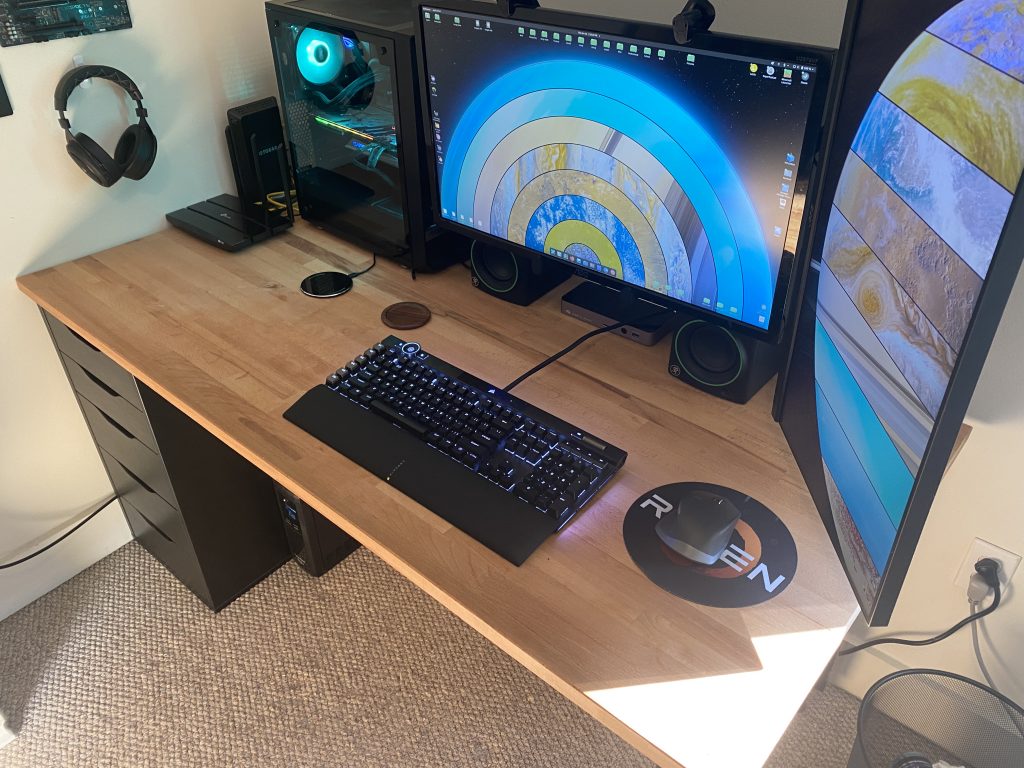2 The Desk Analogy
Think About a Computer the Way You Would a Desk
Ryan Haffner
Many years ago, someone explained the general parts of a PC to me using the desk analogy. To me, this gives even beginners an excellent picture of what the various parts of a PC do and how they relate to performance. Picture yourself sitting at a desk in a time before computers. You have papers on the desk, drawers also full of paper, and lots of work to get done!

1. You
In this analogy, YOU are the CPU, or central processing unit. You might work very quickly on one task at a time, or you may choose to do multiple tasks at the same time, albeit at a slower pace. If you’re an exceptionally efficient worker, you might do both!
2. Size of the Desktop
The physical size or amount of space on the top of the desk corresponds to random access memory, or RAM. A big desktop (lots of RAM) means you can work on multiple of different things at once. On the other hand, a small surface to work on means less space for tasks, meaning you may have to file some of your work in drawers, which is much slower and time consuming.
3. The Drawers
The drawers on the desk are an analogy for system storage. This is where your files and documents are stored. The drawers can hold much, much more data than the top of the desk, but accessing them takes a significantly longer amount of time. The best system (and the one used by computers) is to store data being used right now in RAM, and files used less often are stored in storage.
4. A Calculator
A calculator is a specialized tool, and so is the GPU or graphics processing unit. Some tasks don’t really use the GPU, but tasks that do are helped tremendously by a powerful GPU. Imagine trying to calculate ten-digit multiplication by hand vs using a calculator. Using a calculator is going to be much more efficient and take less time. So to are tasks like rendering video and crunching the massive numbers used in cryptocurrency mining helped by a powerful GPU.
Introduction to Parts Selection
These four parts (CPU, GPU, RAM and storage) represent the four most important components of your build. Other parts, like the case, power supply and system cooling are also important, but are generally cheaper and have a lesser impact on the system’s performance. For each of the four vital parts, I will outline the most important factors when making a part choice and discuss the budget allocation I suggest for that component. Lets get started!
Central Processing Unit. For computational tasks, this is the largest indicator of performance. The important metrics to consider are core count and processor speed.
Random Access Memory. The amount of RAM determines how much can be done at the same time, before a significant performance drop. "RAM" and "memory" are used interchangeably.
Where files are stored long-term. This is different from memory, which is used to store data essential to the running of programs and the operating system.
Graphics Processing Unit - This is the part of the system that renders an image on a screen. For systems built to play video games, render video, or create three-dimensional content, this is the single most important part of the system.
